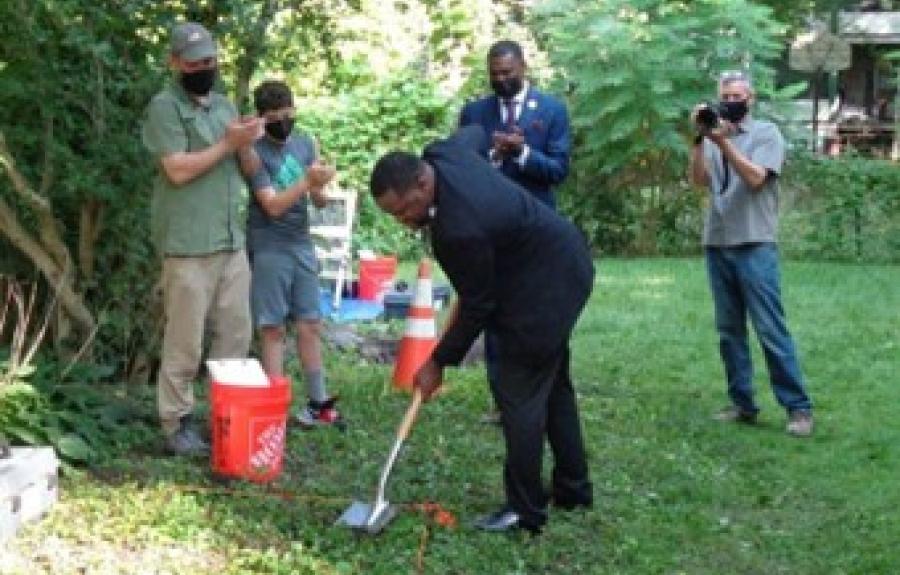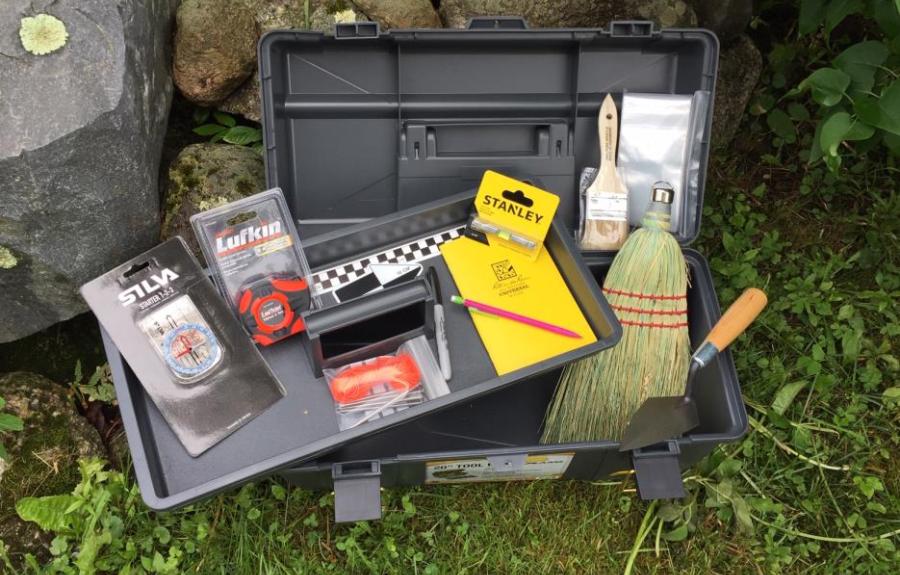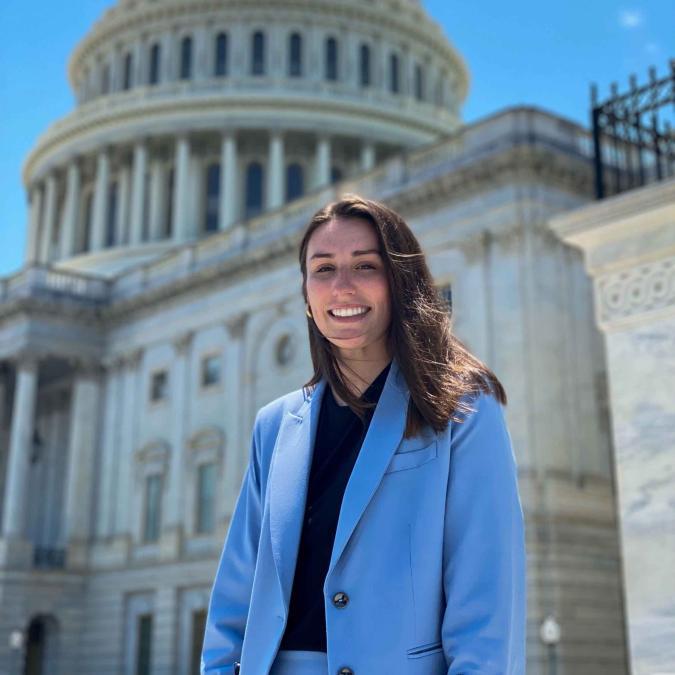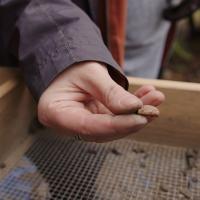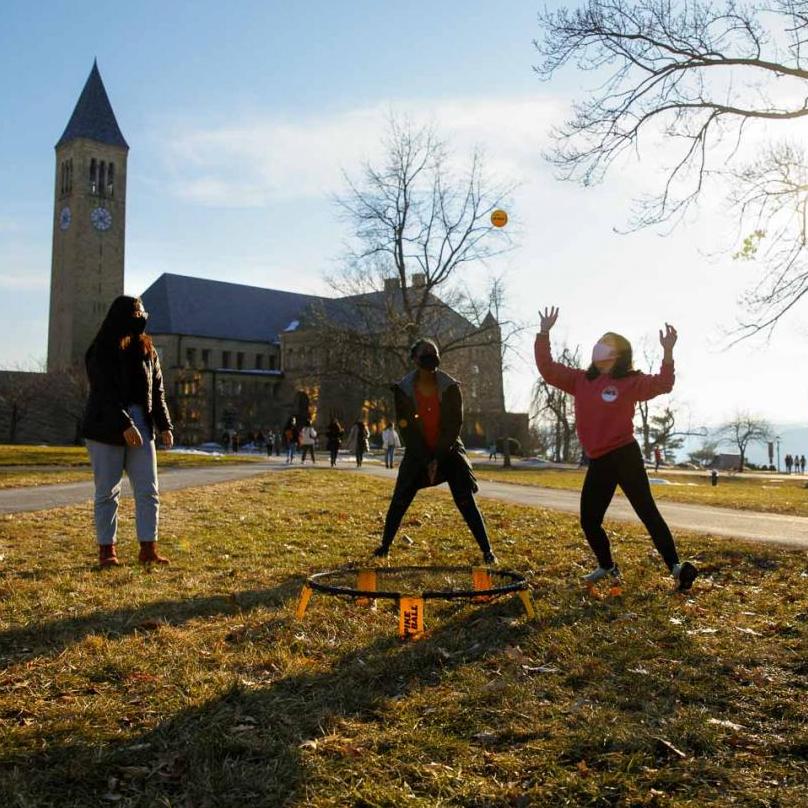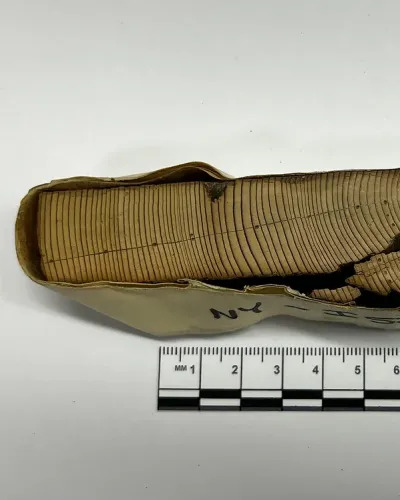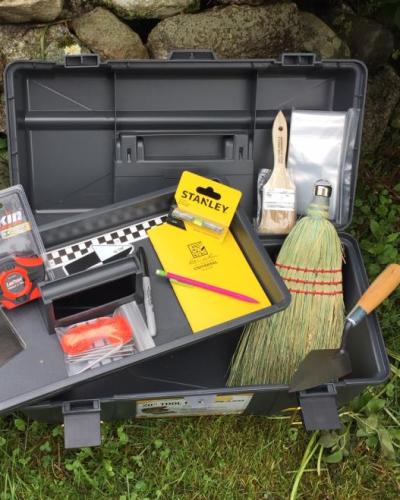On September 9, 2023, I embarked on my first archaeological excavation at the St. James AME Zion Church. Located in the church’s backyard, the site was marked by wet, clumpy soil due to recent rain. We started the day working on a 2x1 unit, adapted for easier volunteer participation.
As I sifted through the soil with two fellow students, I could not help but feel a sense of wonder. We were helping to unearth the church’s rich historical past, which had a profound connection to the Underground Railroad. The church leaders’ support and enthusiasm for the project was infectious.
At the same time, I could not shake an overwhelming feeling of anxiety. Many of my peers in the field were graduate students with prior excavation experience. In contrast, as an undergraduate with no practical background, I felt uncertain about my presence. What if I suddenly forgot everything I had learned in the course so far? What if I did something wrong and ruined the excavation?
*
My anxiety was caused in part by my lack of expertise in excavations, but more importantly by the financial barriers that can make it challenging for students like me to access such opportunities. As a nonwhite Archaeology major, I have chosen to not pursue the field professionally due to the multifaceted financial hurdles.
Field schools are a key part of an archaeologist’s journey, offering hands-on experience in excavation techniques and methods. Unfortunately, they often come with a hefty price tag. The associated costs include not only tuition but also room, board, and transportation. On average, a four-week, for-credit field school costs $4,065. Personally, it made no sense for me to attend. Instead, I redirected my time and resources into free activities related to my Information Science studies, aiming to bolster my credentials for future job applications. Angela, the pseudonym of a young Black woman, faced similar challenges: “The lady I was working for, she asked me have I ever done a field school. I was like, ‘No, because I personally can’t afford it. You know, it’s twelve hundred dollars and I don’t have twelve hundred dollars lying around.’” Students from underrepresented groups are especially affected by the cost of field schools.
Even without those concerns, we would still grapple with the exorbitant expenses of schooling. It is essentially mandatory to pursue graduate school for any jobs other than field or laboratory assistants. In contrast, I will be qualified for various technology roles with just my Bachelor’s degree. These costs are especially burdensome for nonwhite applicants, who already face financial disparities and systemic barriers. Graduate school students incur similar types of costs as in field school.
There are possible ways to cover the price of education, though they are insufficient. Angela, mentioned earlier, applied to and received scholarships for field school on the advice of her mentor. Scholarships and grants are also available for graduate school, but these application processes can be time-consuming. Many of us find ourselves juggling numerous responsibilities, such as working to sustain ourselves or caregiving for family members. This leaves limited time and resources to navigate the scholarship application process, a barrier that many nonwhite students in archaeology encounter. I chose not to navigate the funding process because I used the time to work instead. Even when available, they are competitive and do not fully meet the needs of all nonwhite students.
Students unable to get adequate funding increasingly turn to debt. This is a major concern, especially for nonwhite students, who often face unique socioeconomic challenges. Student debt can be a significant burden, affecting not just their current financial stability but also their long-term prospects. Nonwhite communities are already at a financial disadvantage due to gaps in access to education and historical inequities. As a result, taking on large debts in order to pursue education worsens these disparities, prolonging the cycle of financial inequity.
Even after nonwhite archaeologists obtain their education, their financial woes continue. The field frequently demands unpaid or low-paid internships and fieldwork experiences, which are often essential for gaining practical skills and professional connections. Without these, they are unlikely to get their desired positions in archaeology. On the other hand, I can be reasonably confident that I will obtain a well-paying technology role that aligns with my career preferences right after I graduate. Nonwhite students may face greater difficulty in undertaking these opportunities due to financial constraints. In addition, they are frequently confronted with salary disparities compared to their white counterparts once they begin working.
*
These challenges are systemic issues that affect nonwhite aspiring archaeologists at various stages in their journey. The question therefore becomes: how can we address these challenges and work towards a more inclusive and equitable field of archaeology? We need to explore strategies and solutions that not only remove these barriers but also create a more diverse and representative community within the discipline. Addressing them requires both short-term and long-term strategies.
Direct financial support can help to alleviate the previously mentioned challenges. Universities and archaeological organizations should prioritize creating more financial aid packages and scholarships specifically for nonwhite archaeology students. To ensure equitable access to fieldwork experience, organizations should commit to lowering or eliminating their costs. This would enable nonwhite students to gain practical skills without compromising their financial stability. Archaeological organizations should conduct salary equity reviews to address disparities and ensure that all archaeologists, regardless of their background, are compensated fairly for their work.
There are also indirect ways of financially supporting nonwhite archaeologists. Initiatives like mentorship programs, which can connect nonwhite archaeology students with seasoned professionals who can offer guidance and advice, are instrumental in navigating the field’s challenges. Additionally, archaeologists of all backgrounds must advocate for the implementation of policies and initiatives at both institutional and governmental levels. This collective effort includes lobbying for increased funding for archaeology programs and research. Nick, a person of color who took part in an institutional scholarship committee, reflected that as of now the effort does not seem unified: “‘It felt, too, like why is it all women and people of color on this committee? Right? . . . It’s because no one else in the institution wants to do it or cares.’”
*
My experience with the St. James project highlights the potential of financially inclusive fieldwork experiences. Here, I had the opportunity to engage in fieldwork without the burden of additional costs. My participation in the Field Methods in Community-Engaged Archaeology: Uncovering the Underground Railroad course is fully covered by financial aid. Remarkably, I did not even need to pay for my excavation kit, which includes supplies worth over $100. The St. James excavation team extends this inclusive ethos to the wider community, offering free instruction and excavation experience to volunteers of all ages. This model of financial inclusivity serves as a beacon, reminding us that, by removing financial barriers and embracing diversity, we can create a more equitable and vibrant future for the field of archaeology.
As my first day on the field came to a close, I found myself reflecting on my experience. What stood out to me was not just the thrill of uncovering artifacts like a coin, which held personal significance as a coin collector, but also the invaluable lesson that surrounded me. I realized that I could learn and grow alongside more experienced individuals who graciously welcomed newcomers like me. The inclusivity and supportiveness of the team had a profound impact on me. Despite my initial worries, their welcoming attitude eased my fears. Even when I clumsily dropped the sifting screen, no one chastised me. Instead, we simply picked up the soil and carried on, reinforcing the sense of camaraderie.
This supportive environment, combined with the financial accessibility of participation, played a pivotal role in my decision to continue with the course and remain engaged with the St. James project. It underscored the idea that inclusivity in archaeology is not just a vision but a tangible reality when we dismantle financial barriers and foster a sense of community. This experience reaffirmed my belief that archaeology can indeed become more inclusive and diverse, mirroring the rich tapestry of human history. By removing the financial obstacles that hold back nonwhite individuals from pursuing the field, we can unearth a more inclusive and enriched discipline for generations to come.
References
Anon. 2022. “Student Loan Debt Has a Lasting Effect on Black Borrowers, despite the Latest Freeze in Payments.” PBS NewsHour. https://www.pbs.org/newshour/economy/student-loan-debt-has-a-lasting-effect-on-black-borrowers-despite-the-latest-freeze-in-payments.
Anon. “St James Ithaca Gallery - St James AME Zion Church - Ithaca, New York” . https://stjamesithaca.com/gallery/.
Anon. “Archaeology as a Career.” Society for American Archaeology. https://www.saa.org/about-archaeology/archaeology-as-a-career.
Anon. “Student Field Excavation Kit.” . https://www.stoneyknoll.com/Field-Survey-Excavation-Equipment/Student-Field-Excavation-Kit/flypage.tpl.html?redirected=1.
Heath-Stout, L.E., and E.M. Hannigan. 2020. “Affording Archaeology: How Field School Costs Promote Exclusivity.” Advances in Archaeological Practice 8 (2) (May):123–33. doi:10.1017/aap.2020.7.

